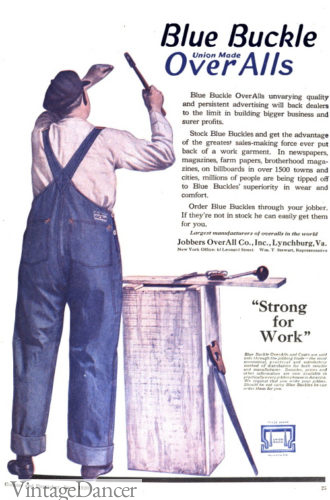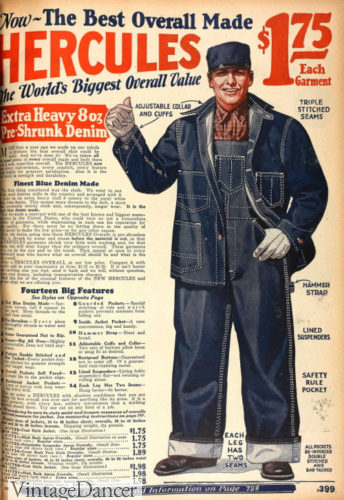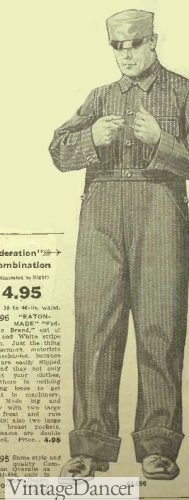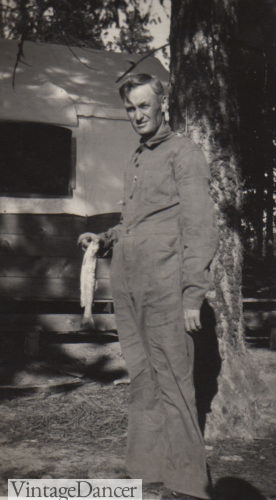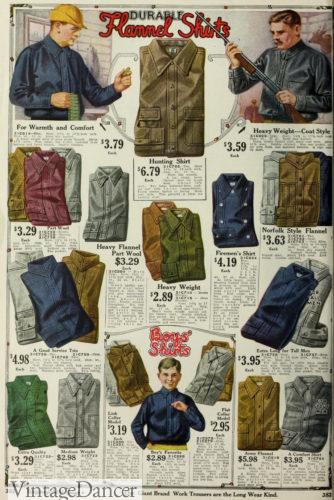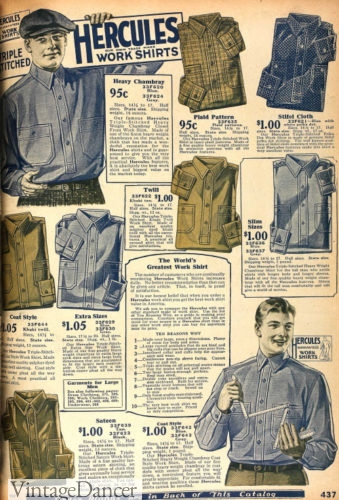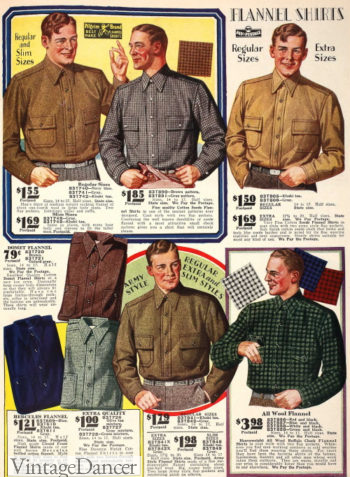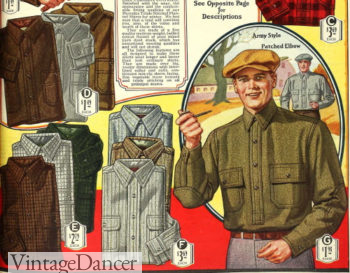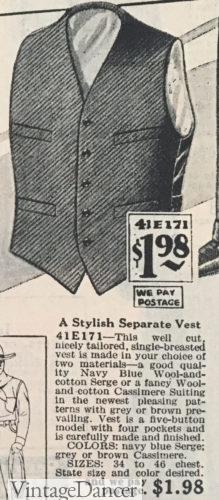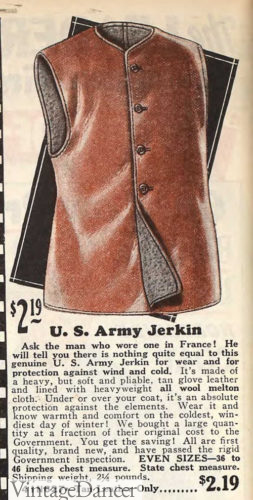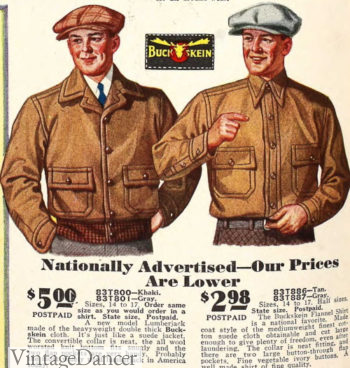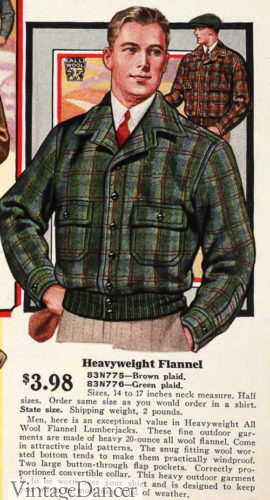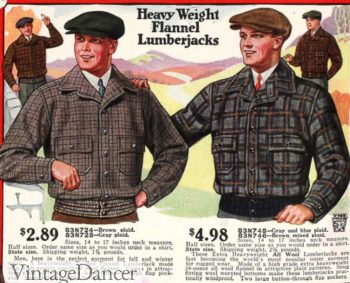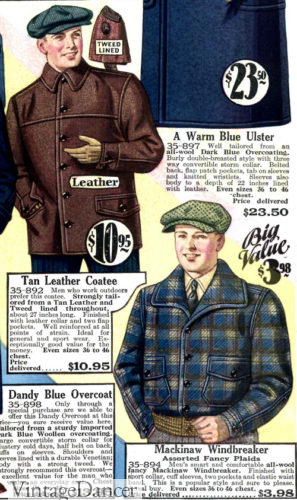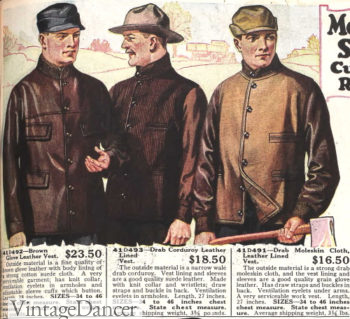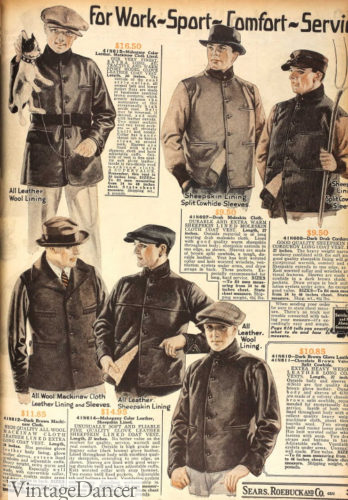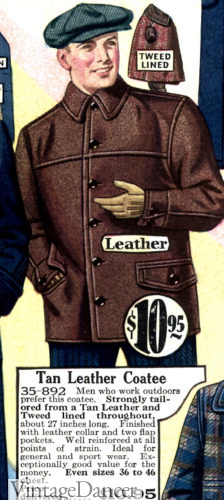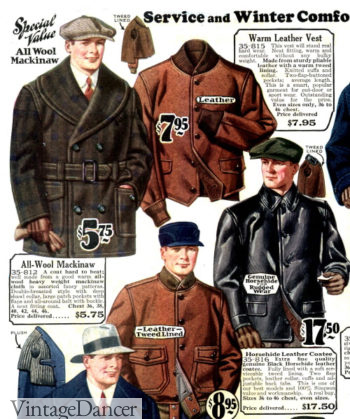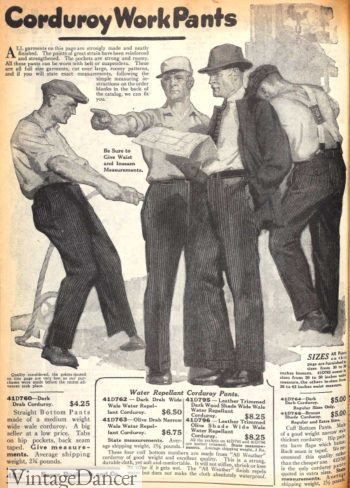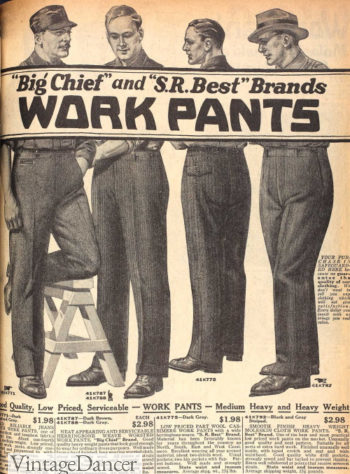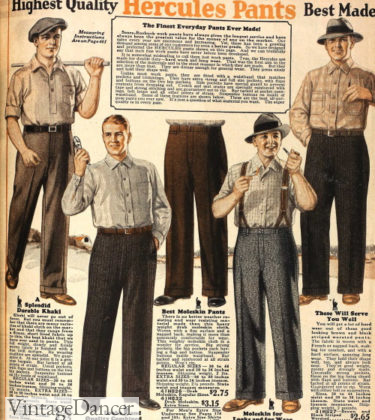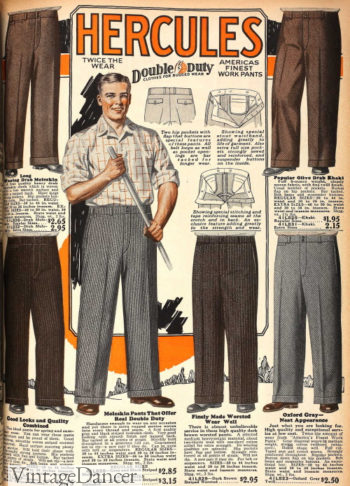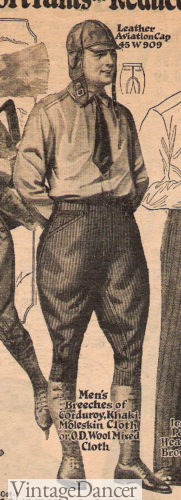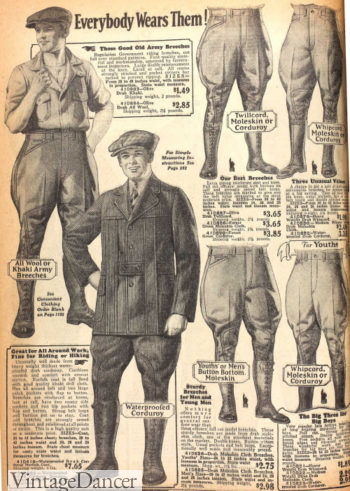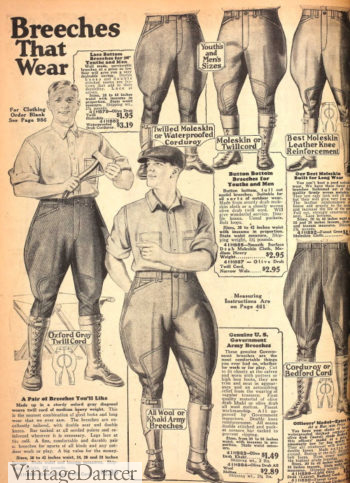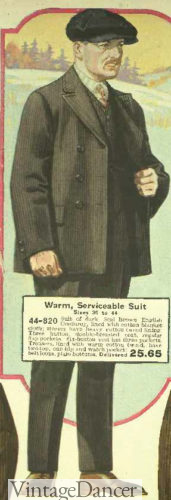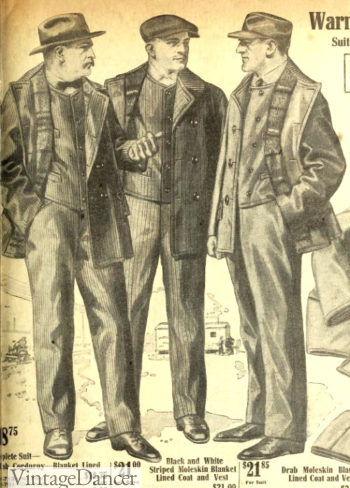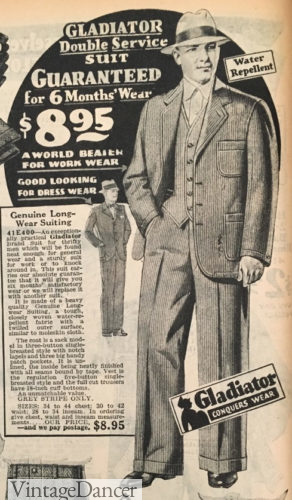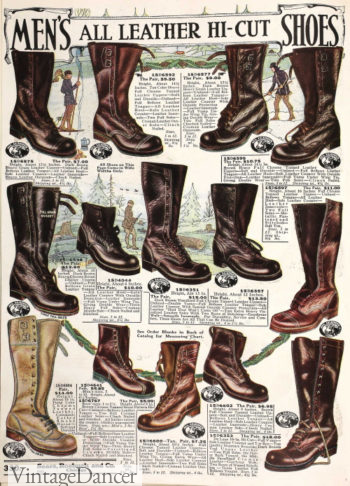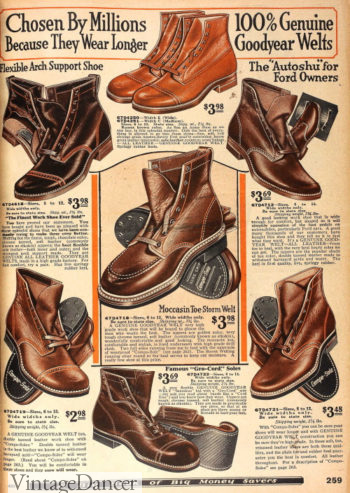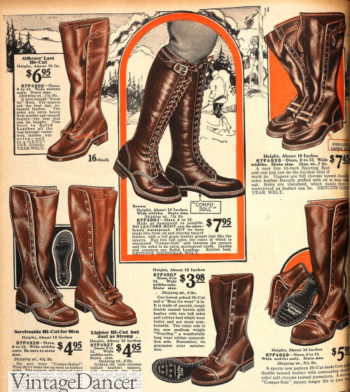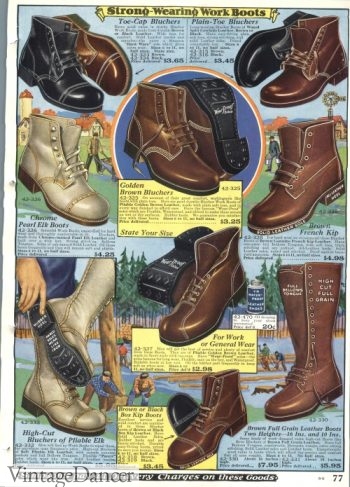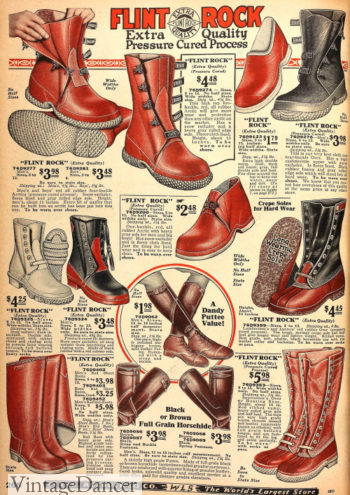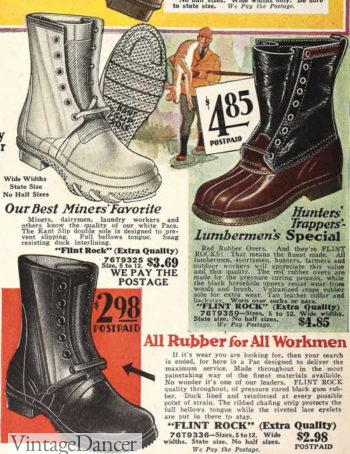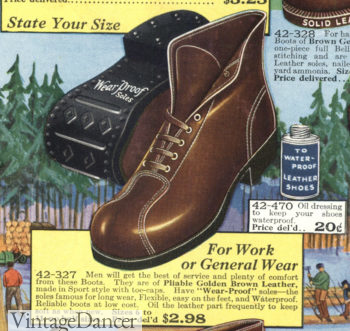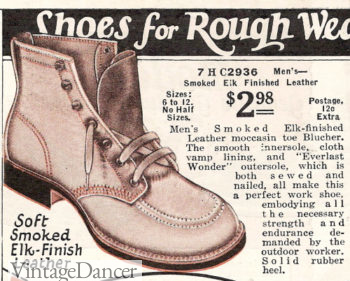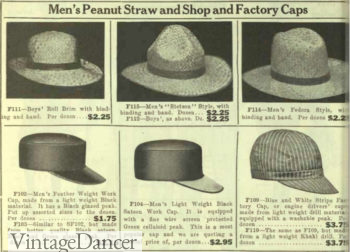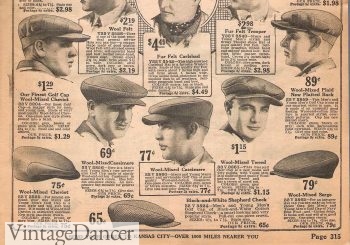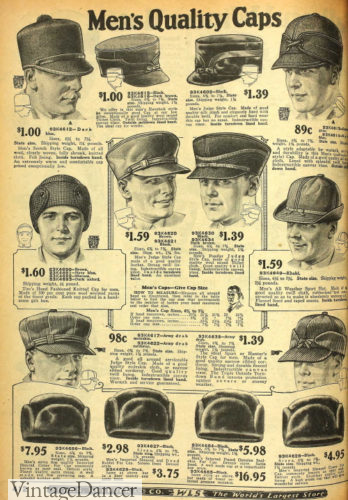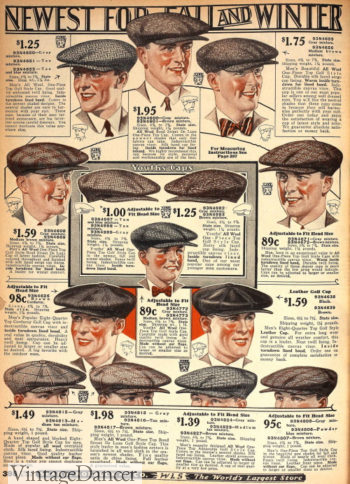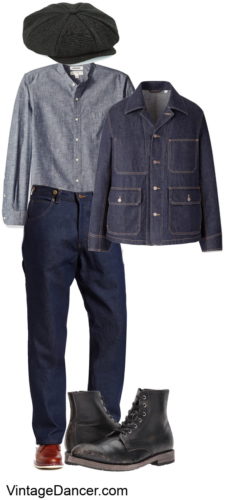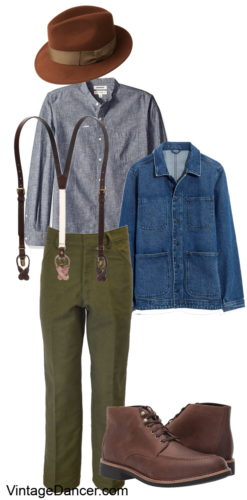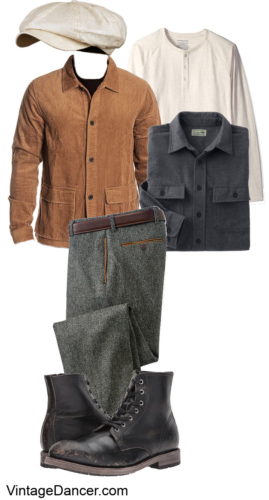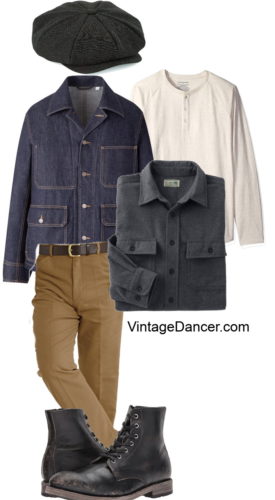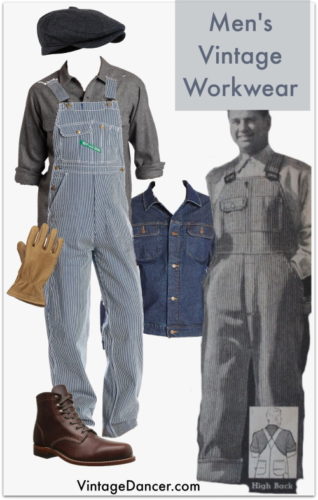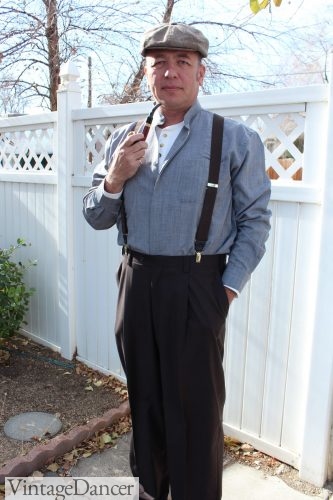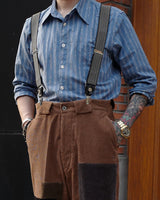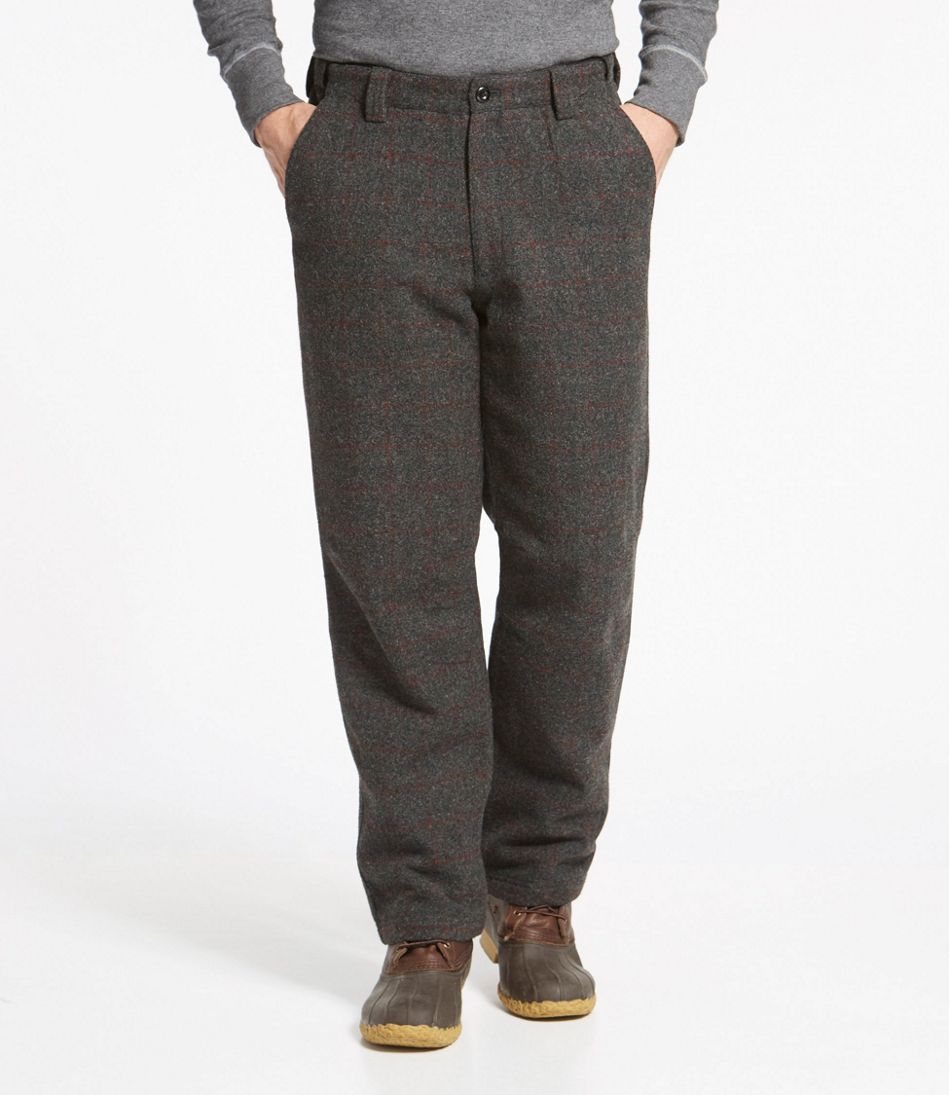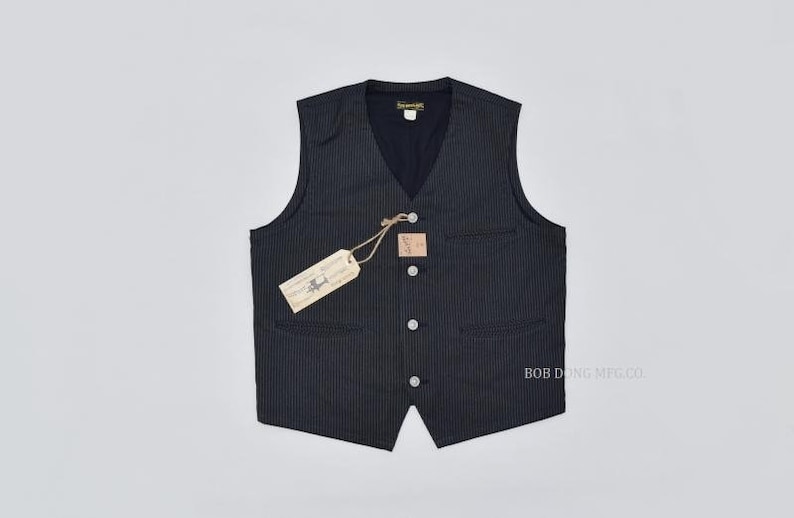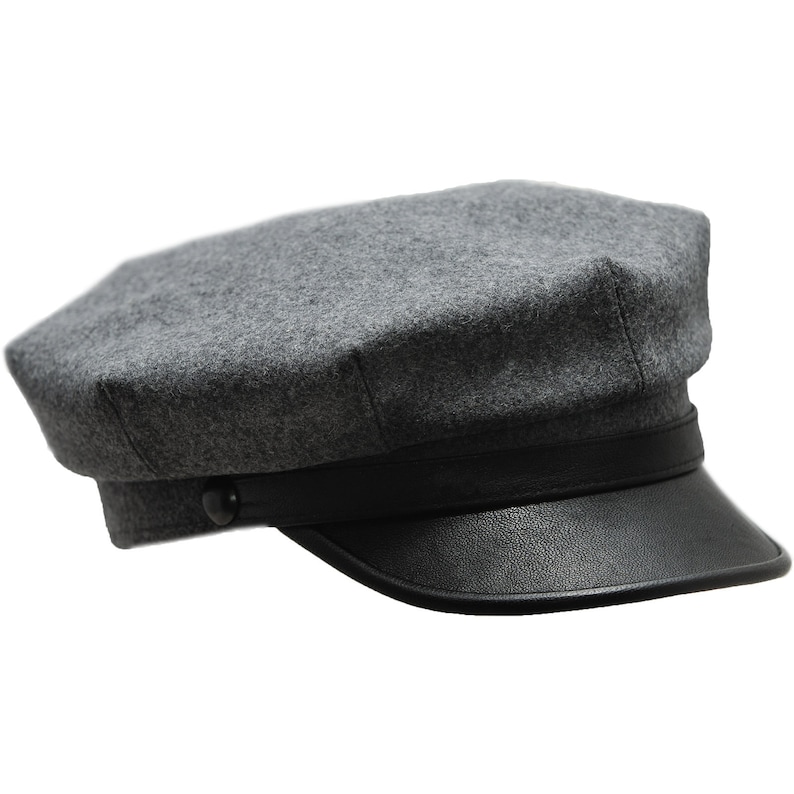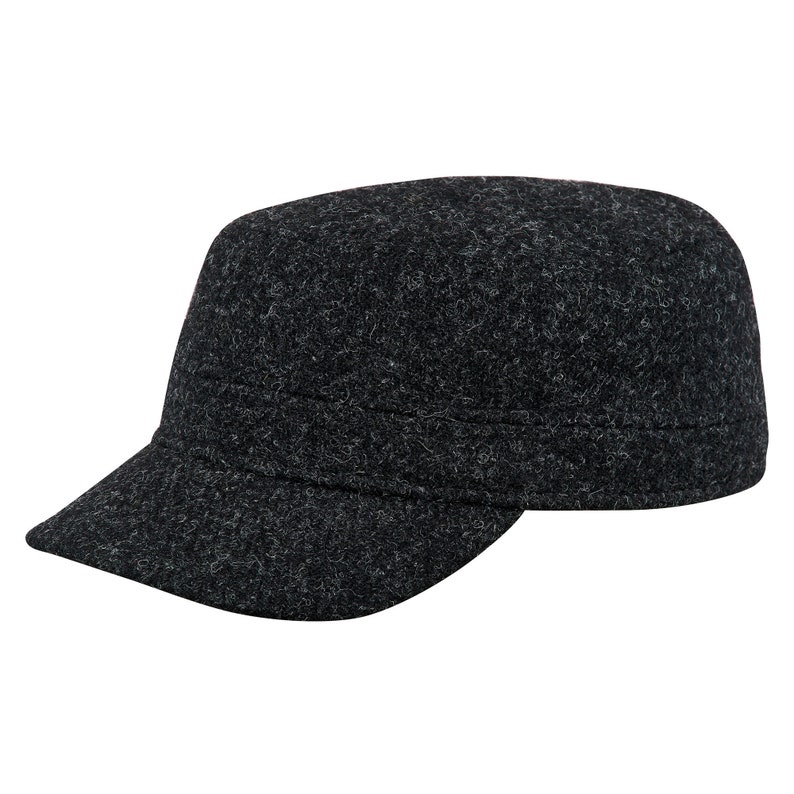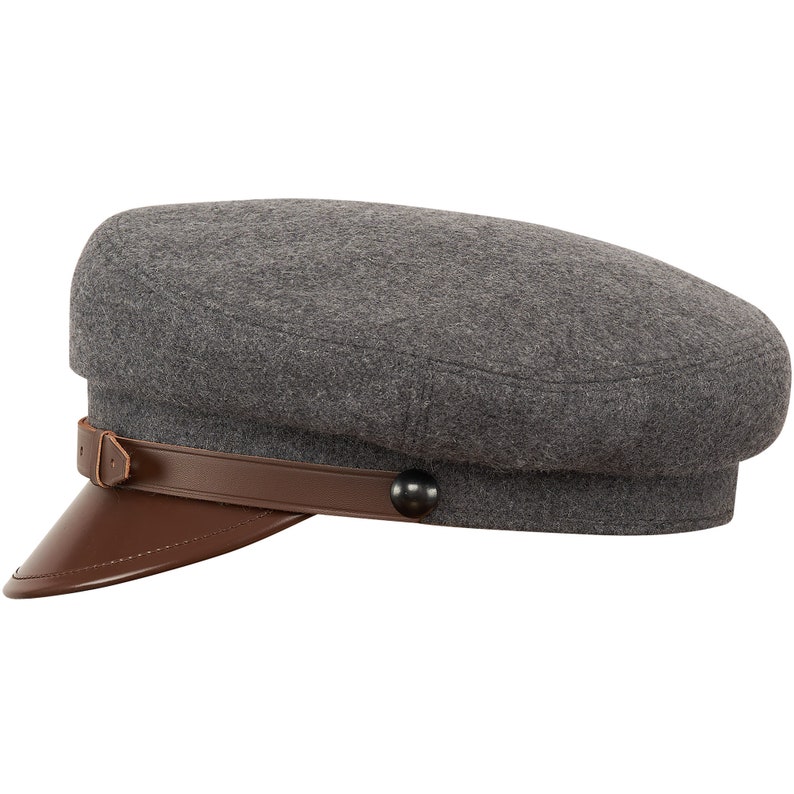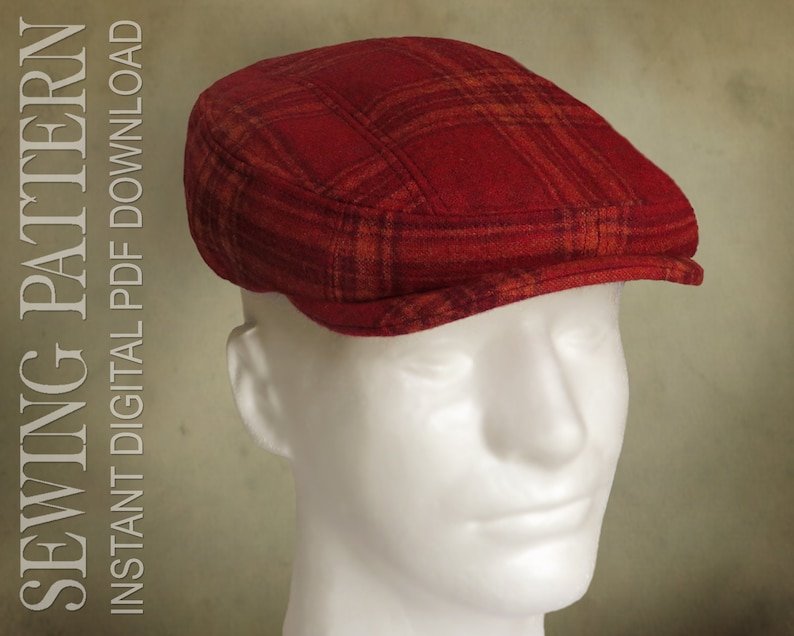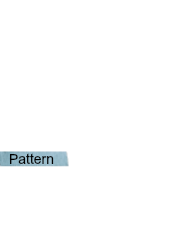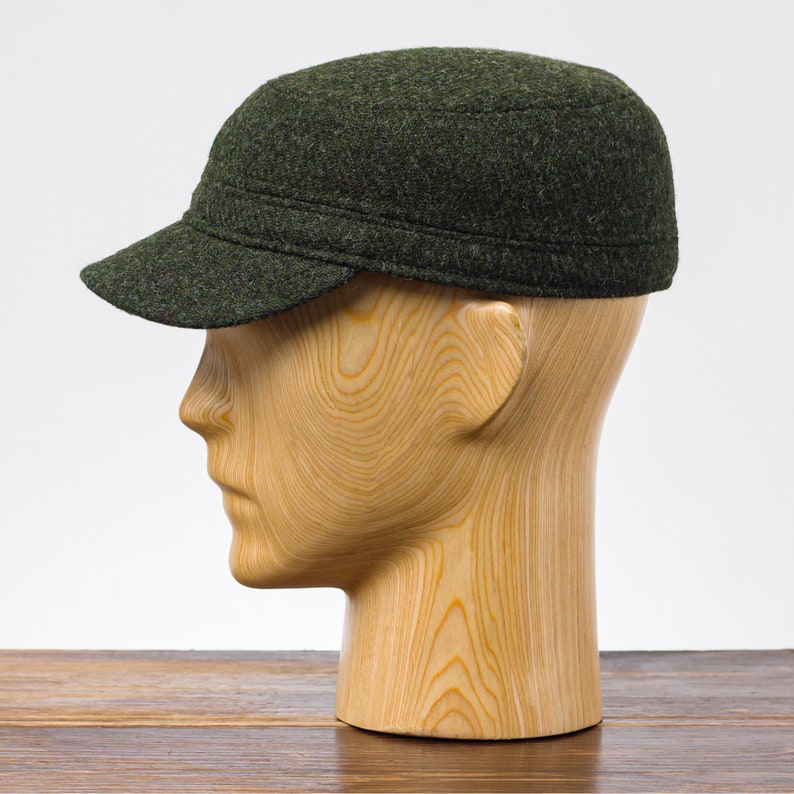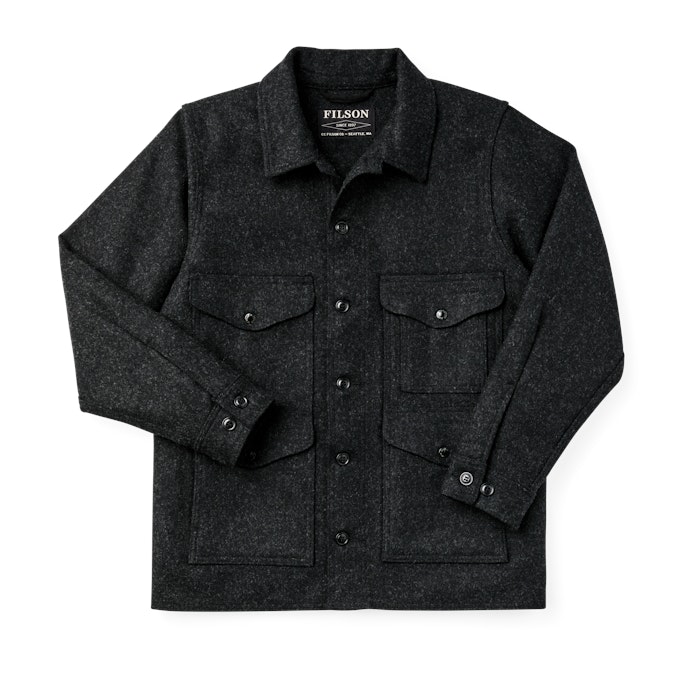Men’s working class clothing in the 1920s utilized a variety of durable clothing, designed to withstand the elements while being practical with a loose fit and ample pockets. Every occupation and employee rank had different requirements for the job adding variety at the job site. Since men worked long hours for mostly low pay the clothes he wore to work became his after work and weekend clothes too (except Sunday Church clothing.) Many upper-class men began to wear working class clothing for sport and leisure (ie casual outfits) when they discovered how comfortable they were.
This article offers a rundown of 1920s men’s workwear, followed by outfit ideas, and links to where to buy vintage style workwear today. If you need help with your outfit, ask us anytime!
Men’s Vintage Workwear: 1920s Overalls
Farmers, oilmen, miners, construction crew, and manufacturing workers may have chosen the classic denim overall to wear to work. Overalls were a one piece unit made of heavy denim cotton or duck cloth in blue, black, white, or blue and white thin stripes. Railroad men usually wore striped overalls and painters wore white. All other occupations preferred blue denim. Black denim was less common after the 1920s.
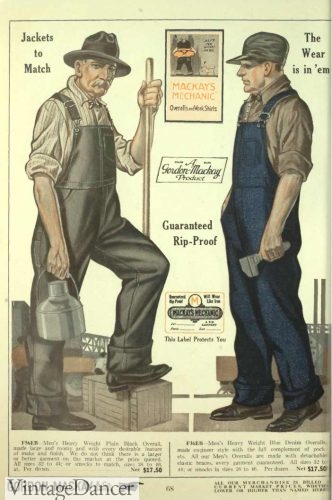
1922 Men’s denim overalls in black or blue.
The front bib often had one or many pockets to hold small tools. Additional large pockets were on the back of the of overalls as well as side pockets. For the early 1920s to 1940s, overalls had large fold-up cuffs (why? I am not sure). The fit of the coverall remained quite baggy from the 1920s to the 1940s, and slimmed down in the 1950s and 1960s to a fit you still see today.
The back of overalls had a few different styles. High back overalls brought the bib up the back in an upside down V and had straps extending over the shoulders. The low back style attached two suspenders, crossed in a low X to the back of the pant. The vest back extended the denim full up the back with a V cutout for the straps that continued over the shoulders.
- 1920 X back overalls
- 1926 blue denim overalls
Overalls were worn over a heavy duty wool or cotton long sleeve work shirt. A matching button up light jacket shirt provided additional protection of the arms, as well as more pockets.
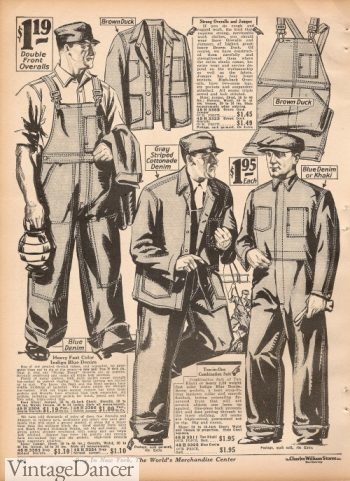
1927 Overalls with matching jackets and coverall on the right
Vintage Men’s Workwear: Coveralls
An alternative to overalls were coveralls, also called wearalls or unionalls. These were preferred by mechanics, aviators, and factory workers who needed to keep clean without straps, pockets, and shirt cuffs that could get tangled in machinery. The coverall was a one piece pant and shirt combination that buttoned up the front. Blue or striped denim, khaki twill, white duck cloth, or any color of medium weight cotton provided a range of durability and hues. Two large chest pockets, side pockets, and sometimes a self fabric belt completed the style.
In the early 1920s coveralls buttoned up from crotch to the neck with a spread collar. The coverall could be worn over other clothing or just over underwear in hot climates.
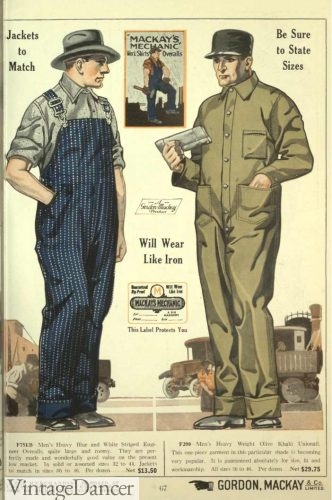
(right) 1922 Men’s plain Unionall / Coverall
- 1920 Men’s striped coveralls with turn up cuffs
- Fishing in coveralls
The Work Shirt
The casual men’s workshirt was simple in design with reinforced seams, double top stitching, and a soft collar. They were pullover over the head and buttoned up the very long placket that tucked into high waist trousers. Wearing a shirt partially unbuttoned made them more comfortable to wear. In summer, rolling up the long sleeves to the elbow was the only option for “short sleeves.”
Shirt collars were classic pointed shapes. They were usually attached to the shirt, unlike dress shirts. There were, however, some detachable shirt collars sold in the early 1920s. While it was unacceptable to go out in public without a shirt collar on, you can find photos of men without collars in workwear settings as well as in the movies (hello, Peaky Blinders.)
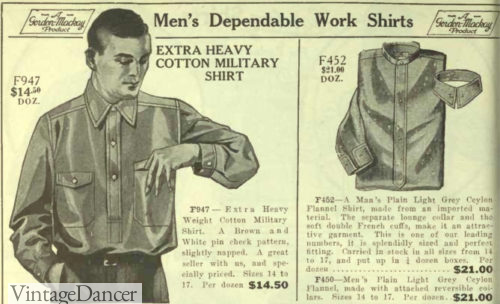
1922 military surplus shirt and collarless shirt with separate collar
Most shirts had two pockets on the front chest, fairly low down, compared to modern shirts. Most shirts had flap pockets with buttons. Some shirts had no-flaps with buttons, but these were far less common after 1922.
In winter wool broadcloth, wool flannel, corduroy, buckskin (faux buck skein) or heavy cotton drill cloth was used. In summer, lighter drill cloth, khaki, chambrey, sateen and even light denim was used. Most work shirts were solid dark colors such as grey, brown, tan, navy blue, olive green and burgundy. Chambrey shirts came in a solid medium blue or blue with white polka dots. Shirts with small checks, plaid, or vertical stripes were also available. Shirts with large plaids, buffalo checks and windowpane were usually worn for outdoor sports, not workwear.
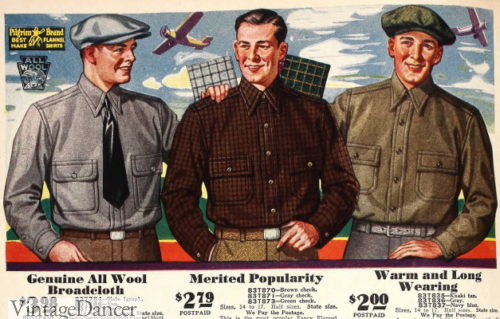
1929 cotton work shirts
- 1920 flannel work shirts
- 1926 chambrey work shirts
- 1929 flannel work shirts
- 1927 cotton and flannel work shirts
A necktie was worn by most men, except for heavy manual work where the tie could be caught in machinery. Skinny knit ties were cheap and plentiful in the early years. Wool, cotton and rayon ties were more affordable in the later years then silk. Men working in nicer jobs often had to wear dress shirts instead of work shirts.
Workwear Vests
In winter an easy way to add a layer without the bulk of a heavy jacket was to wear a leather, moleskin, corduroy or heavy cotton vest. Work vest button up from belt to neckline with a smooth front or 4 pockets. The Army Jerkin, a leftover military vest, continued to be a popular tan leather vest lined in wool for rugged workwear.
- 1929 work vest
- 1928 Army Jerkin Vest
The Work jacket
The work jacket or casual windbreaker/lumberjack jacket was a waist length button up casual jacket with two button flap pockets on the front or side. The style is similar to a Harrington, bomber, of golf jacket. They fit baggy on the torso but with a wide snug waist band and large fold out collar. They were usually made of wool in solid neutral tones or bold plaid patterns. In summer, they were unlined made of thin wool, cotton twill, and rayon blends.
- 1929 khaki or grey jacket
- 1928 plaid flannel jacket
- 1928 flannel lightweight jackets
- 1928 coatee and plaid jacket
Heavy duty work jackets came in leather, moleskin cloth, and corduroy. The vest and the arm had contrasting colors in the early 1920s. The fit was very simple, with a knit neck collar for warmth.
- 1920 men’s work jackets
- 1923 leather work jackets
The coatee was a casual or workwear jacket in a medium weight. Leather or heavy fabric and lined in wool it had an open cotton, simple collars and flap pockets. There were other hip length jackets such as the belted mackinaw jacket with large shawl collar.
- 1928 coatee jacket
- 1928 Men’s Work or Casual Heavy Jackets
Light twill or linen jackets such as the chore coat or longer duster coat served to keep clothes cleaner underneath. They served as a uniform for many occupations. Aprons were also worn by mechanics, painters, shop keepers, and others.
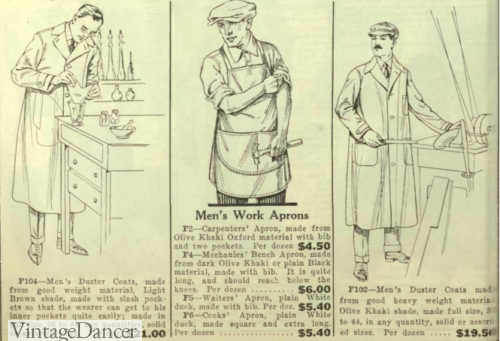
1922 duster coats and apron
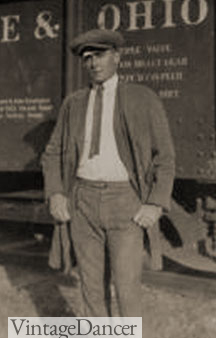
1920 duster coat
1920s Men’s Work Pants
Could be denim blue jeans, a sturdy wool or cotton twill, or corduroy with a wide leg and high waist to match the decade. Work pants were flat front with a pressed seam down the front leg. Suspenders could be worn but belts were preferred. Common colors were dark blue, medium blue, grey, tan, striped blue or black, and drab brown. Large side pockets and back slit or flap pockets finished the pant.
Denim blue jeans had their own style and details. Read the history of blue jeans here.
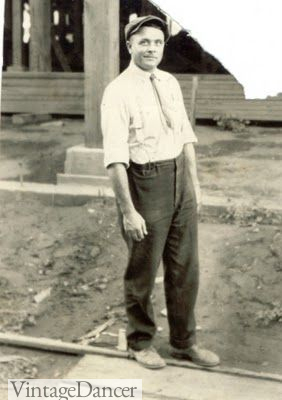
1922 men’s workwear pants, shirt and knit tie
- 1920 corduroy work pants
- 1922
- 1927 men work shirts, pants, and caps
- 1928 work pants
Men’s Work Breeches
Men in management or supervisors, farm owners, chauffeurs, aviators, motorcycle riders, or men in outdoor occupations (including movie directors) often wore the more expensive and wealthy looking, breeches pants. The fit balloon out around the hips and laced tight below the knee. Tall lace up boots and socks covered the leg.
Also called jodhpurs (for horse riding) the material was a durable wool, corduroy, moleskin, or whipcord with reinforced seat, knee and inner leg patches (sometimes leather.) Colors were olive drab, khaki (tan to brown), forest green, navy blue, brown, dark grey, grey/block stripes, or black leather. Lighter tans and cream were reserved for gentlemen’s sports, such as fox hunting.
Work shirts and jackets toped the upper body just like long pants. A pair of high knee socks and lace up boots or leather gaiters (putees) with oxford shoes were worn with breeches.
- 1923 corduroy breeches, aviator cap
- 1929 Khaki Breeches
- 1925 men’s corduroy suit and breeches
- 1927 mens sport or work breeches
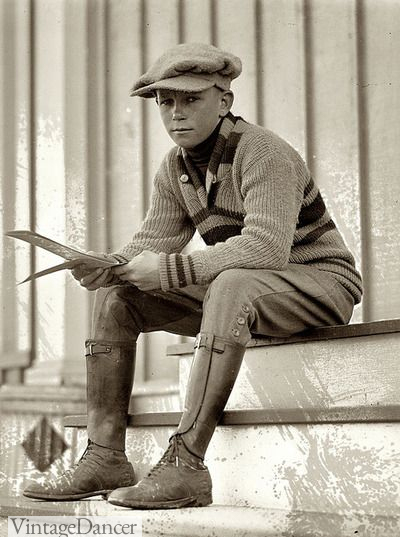
A young boy dressed in breeches, puttees, shoes, sweater, turtleneck shirt, and newsboy cap.
1920s Work Suits
Mangers and high up position men often turned to the 3 peice work suit to distinguish themselves from the lower workers. Most workwear suits were made of corduroy, moleskin and sometimes a striped thick wool suiting in dark brown or olive drab. They came with a matching set of vest, jacket and either long pants or breeches. They were not business suits for gentlemen (although a cheap business suit or un-matching separates could also be worn.)
The suit jacket came in a few different options. One was the sporty Norfolk jacket usually paired with breeches. A more formal option was the single or double breasted suit jacket with notch lapels and 3 large patch pockets. By the end of the decade unlined suit jackets in richer fabrics, cashmere, alpaca, wool suiting, were offered as an affordable alternative to the matching suit set.
- 1920 corduroy suit
- 1920 corduroy and moleskin suits
- 1929 grey stripe work suit
- 1929 cashmere sack coat with striped work pants
Vintage Men’s Work Boots
Physical jobs required heavy duty boots for most occupations. Work boots from the teens onward had an overall similar style. Thick rubber soles with narrow to moderate tread and a lace-up body that extended over the ankle or up over the calf. Most boots had a cap toe although a smooth body or a moccasin top were also options.
Rubber boots existed for wet jobs, but leather was good enough for most work environments. It wasn’t just cow leather. Horsehide and even kangaroo leather were deemed more durable. Shades of brown and black were the only options until the grey colored Elk tanned boot became trendy in the late 1920s.
For heavy rain and snow, the rubber “galoshes” boots came in black or red rubber body with white soles. Three to four buckles secured the boot to the leg. Lace up rubber and leather boots were also available for light weather as well as slip-on rain shoes.
- 1920 high shaft work boots
- 1925 men’s work boots- moc or cap toe
- 1926 tall work or sport boots
- 1928 men’s work boots for winter
- 1925 red or black rubber galoshes
- 1929 rubber muck boots
- 1928 Scout style work boots
- 1927 grey Elk tanned moc toe work boots
Men’s Work Hats
You may have noticed in many of the above illustrations that men were wearing hats. These were usually not nice felt fedoras or other gentlemen’s styles, although managers could wear them, as well as farmers who wore older, worn out hats. A nice Sunday hat turned into a workwear hat every year or whenever it became to shabby to look well with nice clothes.
Instead, flat caps (also called ivy or newsboy caps) donned most working men’s heads.
Shop caps with a baseball cap brim (also similar to cadet caps) were another workwear favorite. A striped version became iconic with railroad men and later took the name engineer cap.
More formal yacht caps came in white, blue or black for different uniform requirements.
Large brim felt or straw hats popular with farmers or those who labored in the sun.
- 1922 straw hats and caps
- 1922 mens caps suitable for work or leisure
- 1927 men’s winter work caps and fur hats
- 1928 mens casual caps
Workwear Sweaters, Underwear, Accessories
Looking at photos of working class men you can often see what looks like a Henley shirt underneath their clothes. This is not a Henley shirt but underwear, such as union suits (long johns.) Read more about 1920s men’s underwear here.
Men in mild winter or indoor jobs may have worn a sweater instead of heavy jacket. Read about men’s sweaters (jumpers) here.
Men’s gloves were essential to tough jobs. Read more.
Suspenders and belts, while not necessary to men’s workwear, were available. Choose striped elastic or leather button on suspenders or a simple leather belt.
1920s Workwear Outfits
Here are some outfit ideas, mixing available workwear/casual clothing, into approximate 1920s men’s working class looks. Since vintage workwear is back on trend again any of these looks can be worn in day to day life.
- Denim on denim workwear
- Everyday workwear or casaul- chambray shirt, denim chore jackets, wool pants, suspenders, fedora hat, boots
- Fall fashion mix- Wool pants, flannel shirt, cord jacket, Henley undershirt, cap, boots
- Vintage or trendy now? You decide.
- Vintage workwear with overalls, denim jacket, cap, boots and gloves
- Workwear/casual inspired style.
Workwear Style Clothes
These new clothes and some reproduction clothing mimic the 1920s workwear style. Mix and match however you please, that’s what they did in the 1920s too!
Some brands that carry repro or general workwear style clothing can be found here.
Debbie Sessions has been teaching fashion history and helping people dress for vintage themed events since 2009. She has turned a hobby into VintageDancer.com with hundreds of well researched articles and hand picked links to vintage inspired clothing online. She aims to make dressing accurately (or not) an affordable option for all. Oh, and she dances too.
